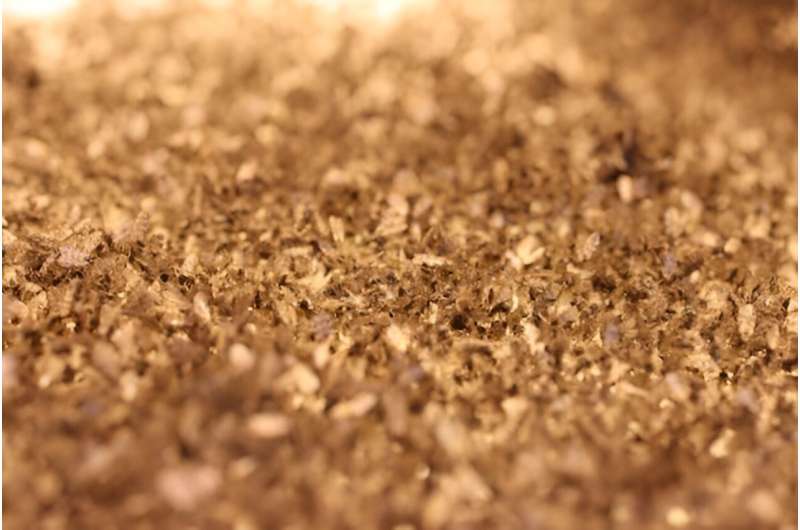This article has been reviewed according to Science X's editorial process and policies. Editors have highlighted the following attributes while ensuring the content's credibility:
fact-checked
trusted source
written by researcher(s)
proofread
What is 'sloth fever?' And how can I avoid it when traveling to South America?

International authorities are issuing warnings about "sloth fever." Despite the name, it's not contracted via contact with sloths. Rather, you should avoid contact with mosquitoes and biting midges.
So how can Australians protect themselves from sloth fever when traveling to South and Central America? And how does "sloth fever" compare with other mosquito-borne diseases, such as Zika?
What is 'sloth fever?'
Sloth fever is caused by Oropouche virus and is formally known as Oropouche virus disease or Oropouche fever.
The virus is an orthobunyavirus. So it's from a different family of viruses to the flaviviruses (which includes dengue, Japanese encephalitis and Murray Valley encephalitis viruses) and alphaviruses (chikungunya, Ross River and Barmah Forest viruses).
Oropouche virus was first identified in 1955. It takes its name from a village in Trinidad and Tobago, where the person who it was first isolated from lived.
Symptoms include fever, severe headache, chills, muscle aches, joint pain, nausea, vomiting and a rash. This makes it difficult to distinguish it from other viral infections. Around 60% of people infected with the virus become ill.
There is no specific treatment and most people recover in less than one month.
However, serious symptoms, including encephalitis and meningitis (inflammation of the brain and membranes surrounding the brain and spinal cord) have occasionally been reported.
What's happening with this latest outbreak?
In July, the Pan American Health Organization issued a warning after two women from northeastern Brazil died following infection with Oropouche virus, the first fatalities linked to this virus.
There has also been one fetal death, one miscarriage and four cases of newborns with microcephaly, a condition characterized by an abnormally small head, where infection during pregnancy occurred. The situation is reminiscent of the Zika outbreak in 2015–16.
Oropouche had historically been a significant concern in the Americas. However, the illness had slipped in importance following successive outbreaks of chikungunya and Zika from 2013 to 2016, and more recently, dengue.
How is Oropouche virus spread?
Oropouche virus has not been well studied compared to other insect-borne pathogens. We still don't fully understand how the virus spreads.
The virus is primarily transmitted by blood-feeding insects, particularly biting midges (especially Culicoides paraensis) and mosquitoes (potentially a number of Aedes, Coquillettidia, and Culex species).
We think the virus circulates in forested areas with non-human primates, sloths and birds as the main suspected hosts. During urban outbreaks, humans are carrying the virus and blood-feeding insects then go on to infect other people.
The involvement of biting midges (blood sucking insects mistakenly known as "sandflies" in Australia) makes the transmission cycle of Oropouche virus a little different to those only spread by mosquitoes. The types of insects spreading the virus may also differ between forested and urban areas.
Why is Oropouche virus on the rise?
The United States Centers for Disease Control and Prevention (CDC) recently issued a warning about rising cases of Oropouche in the Americas. Cases are rising outside areas where it was previously found, such as the Amazon basin, which has authorities concerned.
More than 8,000 cases of disease have been reported from countries including Brazil, Bolivia, Peru, Colombia and Cuba.
Cases of travelers acquiring infection in Cuba and Brazil have been reported on return to Europe and North America, respectively.
While a changing climate, deforestation and increased movement of people may partly explain the increase and geographic spread of the virus, something more may be at play.
Oropouche virus appears to have a greater potential for genomic reassortment. This means the evolution of the virus may happen faster than other viruses, potentially leading to more significant disease or increased transmissibility.
Other types of orthobunyaviruses have been shown to undergo genetic changes to result in more severe disease.
Should Australia be concerned?
Without more definitive information about the role of local biting midges and mosquitoes in Oropouche virus spread, it is difficult to assess how great the risk is to Australia.
The risk of an infected traveler bringing the virus to Australia is low. Very few cases of Zika were reported in travelers from South or Central America returning to Australia. Dengue is rarely reported from those travelers either.
The biting midges most important to the spread of the virus in the Americas are not present in Australia.
While the risks are low, authorities need to be aware of potentially infected travelers returning from South and Central America and to have appropriate testing protocols to identify infection.
Australia has its own local orthobunyaviruses and while these are known to infect people, the health risks are considered low.
What can travelers do to protect themselves?
There are no vaccines or specific treatments available for Oropouche virus.
If you're traveling to countries in South and Central America, take steps to avoid mosquito and biting midge bites.
Mosquito repellents containing diethytoluamide (DEET), picaridin and oil of lemon eucalyptus have been shown to be effective in reducing mosquito bites, and are expected to work against biting midge bites too.
Wearing long-sleeved shirts, long pants and covered shoes will further reduce the risk.
Sleeping and resting under insecticide-treated mosquito bed nets will help, but much finer mesh nets are required as biting midges are much smaller than mosquitoes.
Although no specific warnings have been issued by Australian authorities, the CDC and European Center for Disease Prevention and Control have warned that pregnant travelers should discuss travel plans and potential risks with their health-care professional.
This article is republished from The Conversation under a Creative Commons license. Read the original article.![]()




















